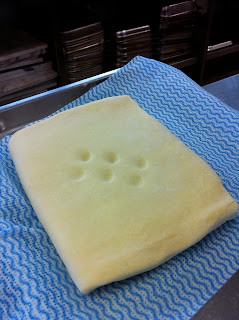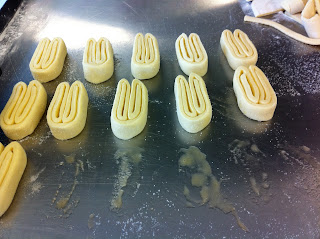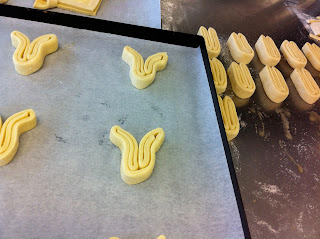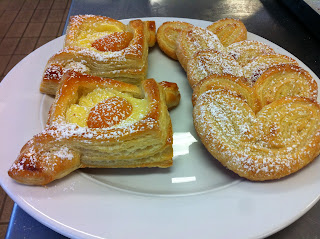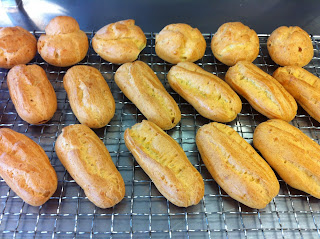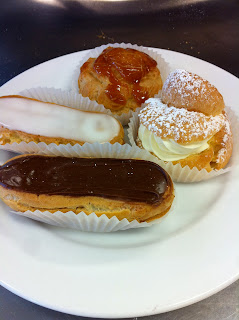For all the puff pastries we make we use the same recipe which you can find on my previous post.
Rough Puff. Its quicker then the other methods as you don't let the dough rest before incorporating the butter or do as many folds. You do 2 single turns and 2 double turns and the butter goes in to start with.
Sift the flour and salt (please please please make sure you do this... I've found a little unwanted friend in my flour when I sifted it who was hiding and unseen until him and his babies were left in my sieve at the end. Gave me the heedie geebies!!!) in a large bowl and add your butter in small pieces, tossing to coat the butter pieces in flour.
Add the water and mix roughly. DO NOT rub the butter into the flour. It will look like a shaggy mess at this stage and you'll probably think your doing it all wrong but you WANT huge lumpy chunks of butter with a dough surrounding them.
Knead lightly into a ball making sure you keep the chunks and don't let them disappear.
Roll the dodgy, chunky looking dough into a long rectangle and fold into thirds. Flip the dough so the open ends are at the top and bottom and roll out again. This time you will do a double fold; Fold both long ends into the middle (like a book) and then fold it in half (close the book). Allow to rest for 20min covered in a damp cloth in the fridge.
Place the dough with open ends at the top and bottom and roll out again. Do a single fold (in thirds), turn the dough, roll out and do a double fold. Allow to rest again before rolling the dough out to your required thickness.
We made Bande de Fruits and cut three different sizes. (A)10cm x 30cm. (B)12cm x 30cm and (C)13cm x 30cm. We also made small fruit tarts using a circle cutter and topping them with almond cream and fruit.
With A we made an indent lengthways 1cm in from the sides and places sliced apples sprinkled with sugar down the centre. Brush the exposed pastry with egg wash.
With C we made cuts down the middle in the shape of a v's, piped down the middle of B with almond cream and placed apple on top of the almond cream, brushed the edges with an egg wash and then placed C on top of B brushing the top with more egg wash.
Mmmmm delish!


